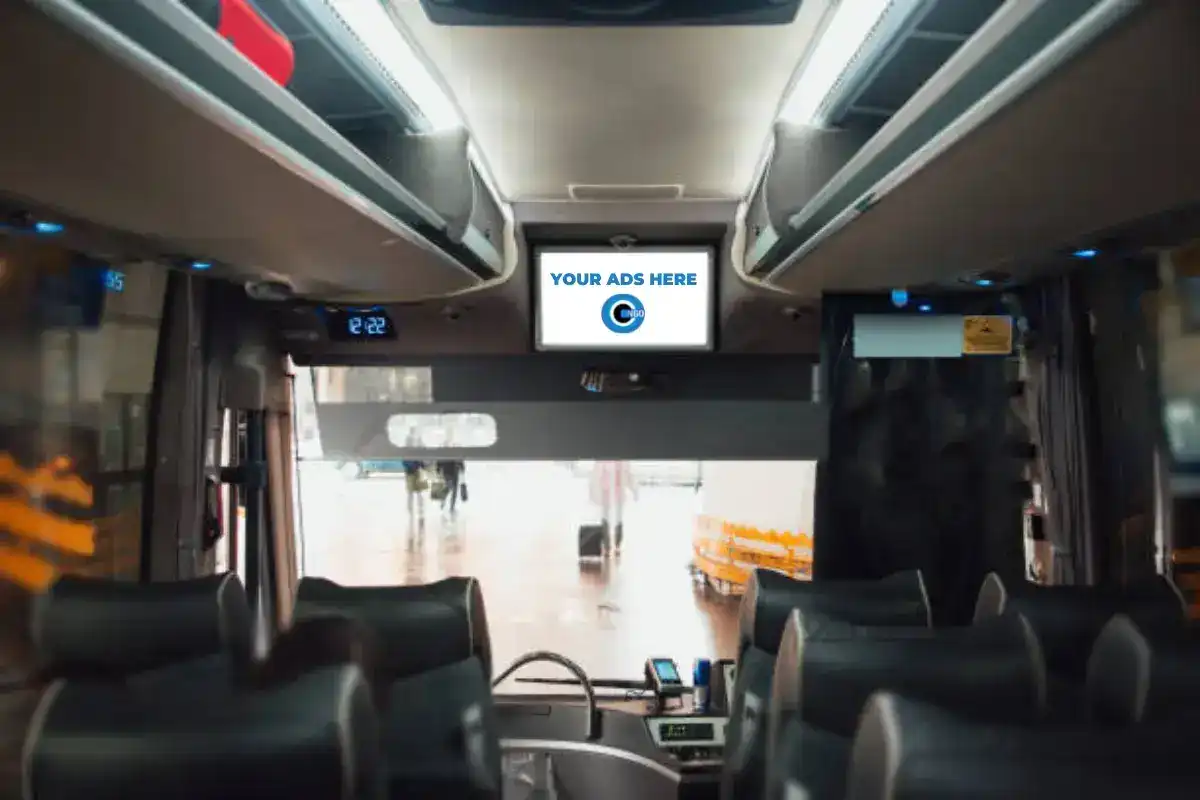Maximize Exposure with Transit Advertising Philippines
Maximize Exposure with Transit Advertising Philippines
Blog Article
Comprehending the Role of Transportation Advertising in Enhancing Brand Name Visibility and Consumer Engagement
Transportation advertising has become a pivotal component in the advertising landscape, offering one-of-a-kind possibilities for brands to raise their exposure and involve consumers effectively. With the ability to reach a captive and diverse audience throughout their day-to-day commutes, these marketing methods are not simply about presence; they have to do with producing meaningful links with potential clients. As we discover the multifaceted benefits and innovative approaches within transit advertising, it ends up being necessary to consider exactly how these components jointly affect customer understanding and behavior, questioning concerning their lasting effect on brand name commitment.
Definition of Transit Marketing
Transit advertising describes the technique of advertising items, services, or brands through advertisements placed around public transport systems. This kind of advertising encompasses a variety of positionings, consisting of posters on buses and trains, electronic screens at transportation terminals, and covers on the outside of lorries. It intends to get to a varied target market, profiting from the high foot traffic connected with public transportation.
Transit marketing is purposefully positioned to capture the focus of travelers, who typically spend substantial time traveling or waiting. By incorporating ads into the day-to-day routines of people, brands can develop a long-term perception and foster brand name recognition. The medium is specifically efficient in urban environments, where public transportation is a key mode of travel.
In addition, transportation advertising can facilitate local targeting, enabling services to reach details demographics based on transportation routes and terminal areas. As urban populaces grow and making use of public transport increases, this advertising approach has gained importance as an important part of integrated advertising and marketing methods. The dynamic nature of transportation advertising and marketing, integrated with its capacity to involve consumers in a captive atmosphere, highlights its relevance in contemporary advertising and marketing methods.
Benefits of Transit Advertising
The effectiveness of transit marketing hinges on its capacity to provide a wide variety of advantages to brand names looking for to boost visibility and interaction. Among the primary advantages is the substantial reach it offers; transportation advertisements can efficiently target varied demographics throughout city areas, getting to both travelers and pedestrians alike. This wide direct exposure dramatically increases brand name awareness.
One more advantage is the high frequency of impacts. As transportation automobiles follow well-known routes and stop at numerous places, they develop repetitive exposure that strengthens brand messages. This frequency cultivates familiarity, which is crucial in consumer decision-making.
Transit advertising and marketing is likewise economical compared to other media platforms. Offered its large reach and capacity for high perceptions, brands frequently experience a lower price per thousand perceptions (CPM), maximizing their advertising budget.
In addition, transportation ads can create a feeling of neighborhood connection. By straightening with regional transit systems, brands can reverberate with local target markets and cultivate a feeling of regional pride. This localized method improves brand loyalty and engagement, making transportation advertising and marketing an engaging selection for businesses intending to strengthen their presence in the market.

Effective Techniques for Transit Campaigns
To make the most of the impact of transportation projects, brand names ought to leverage strategic preparation and execution tailored to their target market. First, determining the market qualities of the audience making use of public transit is crucial. This enables brand names to produce tailored messaging that resonates with possible consumers.
Following, selecting the ideal transit mediums is crucial. Whether utilizing bus covers, metro posters, or digital screens, each tool has unique benefits that can boost visibility. For circumstances, vivid visuals on bus wraps can stand out, while digital ads can be upgraded frequently to show timely promos.
Moreover, incorporating a cohesive branding method throughout transit systems makes sure consistency and enhances the brand's identity. Using captivating styles and remarkable taglines will certainly strengthen brand name recall among travelers.
Lastly, timing is an essential element in implementing effective transportation campaigns. Releasing campaigns throughout peak travel hours or local events can considerably enhance exposure and interaction. By utilizing these methods, brand names can properly harness the possibility of transportation advertising and marketing, cultivating better awareness and link with their target market. Inevitably, a well-executed transportation project can drive considerable growth in brand visibility and consumer engagement.

Measuring Influence and Interaction
In evaluating the efficiency of transportation ad campaign, exact measurement of influence and engagement is important for brands looking for to maximize their advertising approaches. Metrics such as reach, regularity, and impacts supply fundamental information to analyze presence. Analyzing these aspects aids figure out the amount of prospective customers are subjected to the advertisements throughout their everyday commutes.
Engagement can be additional gauged via consumer interactions, such as internet site web traffic, social networks states, and direct responses to calls-to-action included in the ads. Making use of devices like QR codes or special URLs can promote tracking of consumer actions directly connected to transportation projects. Surveys and feedback devices also serve as valuable approaches to gather qualitative information on customer perceptions and recall of the advertisement.
In addition, advanced analytics and acknowledgment designs can correlate transportation direct exposure with succeeding investing in actions, supplying insights into the return on financial investment. By employing a detailed strategy that combines qualitative and quantitative procedures, brand names can create a nuanced understanding of their top article transportation advertising impact. Eventually, this data-driven method allows brand names to improve their projects, guaranteeing they reverberate effectively with target audiences and improve general brand presence.
Study of Successful Projects
Successful transportation advertising and marketing projects serve as compelling examples of exactly how efficient approaches can elevate brand exposure and interaction. Transit Advertising Philippines. One remarkable instance is the "I Love New york city" campaign, which changed the city's image and drew in countless vacationers. By utilizing subway advertisements, billboards, and bus wraps, the campaign produced a solid, natural brand name identification, causing a significant uptick in tourist and regional service patronage
Another excellent project is Coca-Cola's "Share a Coke" effort, which leveraged transit marketing to personalize the brand experience. By including prominent names on marketing materials throughout different transit systems, Coca-Cola cultivated a deeper emotional link with consumers, encouraging them to share their experiences on social media sites.
In addition, the "Got Milk?" project effectively made use of mass transit ads to get to a broad target market, reinforcing the message of the relevance of milk in a balanced diet. The project saw a measurable boost in milk consumption in target demographics.
These instance studies highlight that when performed attentively, transit advertising can dramatically improve brand name exposure, foster customer interaction, and drive quantifiable outcomes, demonstrating its crucial function in modern advertising and marketing techniques. - Transit Advertising Philippines
Conclusion
In conclusion, transportation advertising acts as a vital tool for boosting brand presence and fostering customer interaction. By making use of tactically positioned advertisements within public transport systems, brand names can successfully reinforce and reach diverse target markets acknowledgment through consistent exposure. The execution of targeted messaging and cutting-edge strategies even more intensifies the impact of transit campaigns. Inevitably, the ability to measure interaction and analyze successful situation researches underscores the efficiency of transportation marketing in driving brand name loyalty and customer communications.
Transportation marketing has arised as a crucial aspect in the marketing landscape, providing one-of-a-kind chances for brands to boost their exposure and involve customers properly.Furthermore, transit advertising can assist in local targeting, permitting businesses to get to specific demographics based on transit paths and terminal areas.In examining the effectiveness here of transportation advertising and marketing campaigns, accurate measurement of effect and involvement is crucial for brand names seeking to optimize their marketing strategies.Effective transit advertising projects serve as compelling examples of just how reliable techniques can elevate brand name exposure More Bonuses and interaction.In final thought, transit advertising offers as an important tool for boosting brand visibility and fostering customer engagement.
Report this page